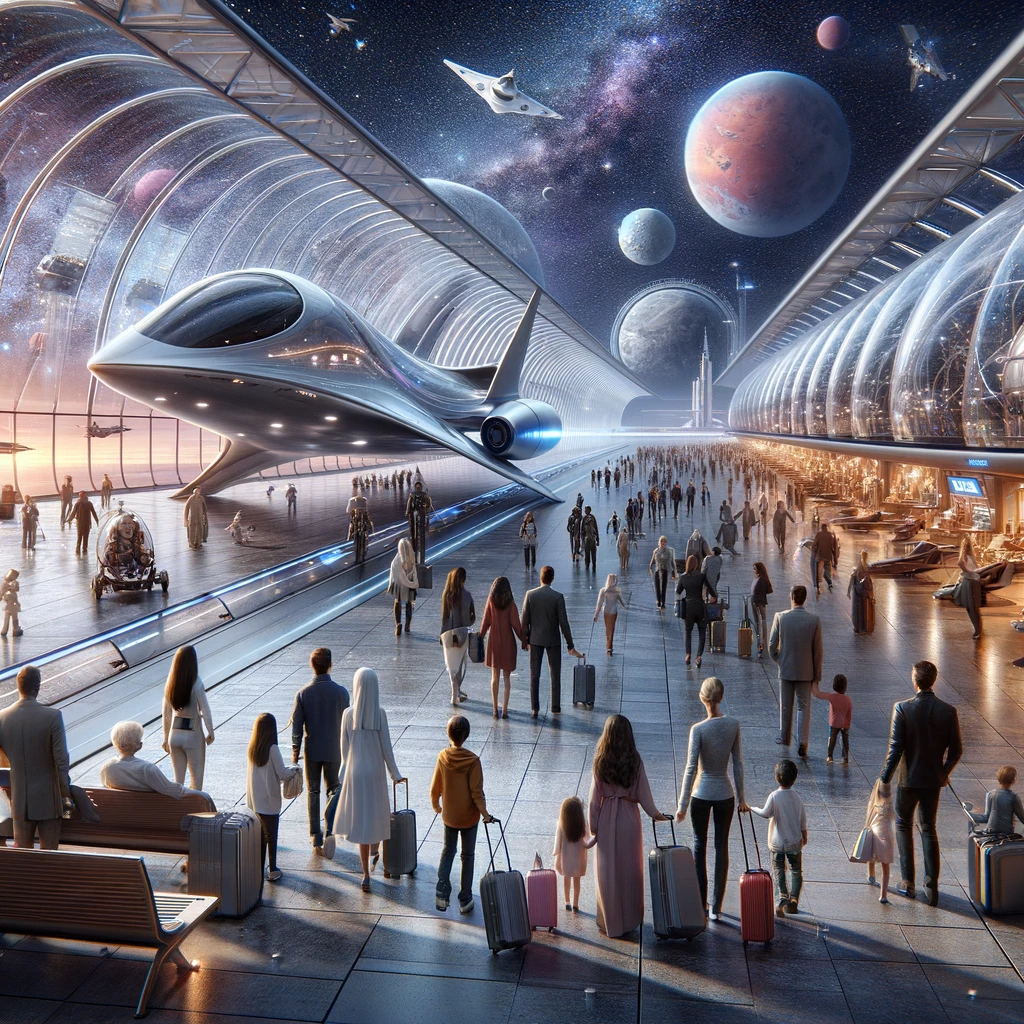
The future of space travel is unfolding before our eyes, marked by significant strides toward commercial voyages and the exploration of Mars. This new era is propelled by advancements in technology, ambitious visions from private space firms, and renewed governmental interest in space exploration. As we gaze into the horizon, two distinct but interconnected paths emerge: commercial space travel, making the cosmos accessible to civilians, and the quest to explore and potentially colonize Mars.
Commercial space travel is no longer the stuff of science fiction. Companies like SpaceX, Blue Origin, and Virgin Galactic are leading the charge, transforming space from a domain reserved for astronauts and scientists into a frontier accessible to anyone with the dream and the means to reach for the stars. The development of reusable rocket technology has been a game-changer, significantly reducing the cost of launching into space. This innovation paves the way for a future where space tourism becomes a reality, offering experiences ranging from suborbital flights to extended stays in space hotels orbiting Earth.
The allure of commercial space travel extends beyond tourism. It opens up new possibilities for scientific research, manufacturing in microgravity conditions, and even the mining of asteroids for precious resources. As commercial entities continue to push the boundaries, we can anticipate a future where space becomes a place of business, innovation, and leisure.
Parallel to the rise of commercial space travel is humanity’s enduring fascination with Mars. The red planet has long captivated our imagination, and current efforts are focused on overcoming the immense challenges of reaching, exploring, and eventually settling on Mars. NASA’s Artemis program, alongside SpaceX’s ambitious plans to use the Starship for Mars missions, are laying the groundwork for the next giant leap in human space exploration.
The journey to Mars requires solving complex problems related to propulsion, life support, and the sustainability of human life on a planet with a hostile environment. The development of technologies for in-situ resource utilization, such as extracting water from the Martian soil and producing oxygen for breathing, are critical for long-duration missions and the possibility of a permanent human presence on Mars.
Exploration missions, robotic rovers, and orbiters continue to gather valuable data about Mars’ geology, climate, and potential for supporting life. These scientific endeavors not only advance our understanding of Mars but also bring us closer to the day when humans will walk on its surface.
The intersection of commercial space travel and Mars exploration is a testament to humanity’s unyielding desire to explore and expand our presence beyond Earth. As commercial companies develop technologies and infrastructure for space travel, their innovations will play a crucial role in making Mars missions feasible. Collaborations between governments and the private sector will likely be pivotal in overcoming the challenges of interplanetary travel.
The future of space travel is a tapestry of commercial ventures and the exploration of Mars, woven together by innovation, collaboration, and a shared dream of reaching beyond our earthly confines. As we stand on the cusp of this new era, the possibilities are as boundless as the universe itself.